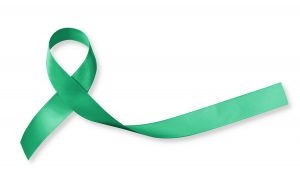 February is Gallbladder and Bile Duct Cancer Awareness Month. Although rare, these cancers affect thousands of people and their families around the world each year. It’s estimated that nearly 12,000 individuals will be diagnosed with gallbladder cancer in 2020, while approximately 8,000 people will be impacted by bile duct cancer. Learn the signs and symptoms associated with these serious illnesses and find out what steps you can take to help reduce your risk and live a healthier life.
February is Gallbladder and Bile Duct Cancer Awareness Month. Although rare, these cancers affect thousands of people and their families around the world each year. It’s estimated that nearly 12,000 individuals will be diagnosed with gallbladder cancer in 2020, while approximately 8,000 people will be impacted by bile duct cancer. Learn the signs and symptoms associated with these serious illnesses and find out what steps you can take to help reduce your risk and live a healthier life.
A Small Organ with Big Responsibilities
The gallbladder is a small, pear-shaped organ located under the liver. Its primary job is to store bile, a substance that aids in the digestion of fat. Gallbladder cancer occurs when cancerous cells are present in the organ. Certain factors that can increase an individual’s risk for gallbladder cancer, include:
- Being female
- Being Native American
Although gallbladder cancer can be successfully treated if diagnosed early, the disease is often difficult to detect before it spreads to other areas of the body. One reason that gallbladder cancer can be challenging to diagnose in its early stages is that symptoms are typically not present until the disease has progressed. When symptoms do appear, they include:
- Yellowing of the skin and whites of the eyes (jaundice)
- Abdominal pain or lumps in the abdomen
- Fever
- Nausea and vomiting
- Bloating
Treatment for the disease depends on the type and stage of the cancer, but usually includes a combination of surgery, radiation therapy, and chemotherapy.
A Rare, But Devastating Illness
Bile duct cancer is more rare than gallbladder cancer, and can affect any of the ducts (tubes) that connect the liver, gallbladder, and small intestine. The National Cancer Institute categorizes bile duct cancer based on where the cancer forms in the body:
- Intrahepatic Bile Duct Cancer: Cancer that forms in the bile ducts inside the liver.
- Extrahepatic Bile Duct Cancer: Cancer that forms in the hilum and distal region of the extrahepatic bile duct.
According to the American Cancer Society, bile duct cancer is more common among individuals living in southeast Asia. Other risk factors for the disease include:
- A prior diagnosis of primary sclerosing cholangitis
- Chronic ulcerative colitis
- Bile duct cysts
- Chinese liver fluke parasite infection
Individuals diagnosed with bile duct cancer often experience the following symptoms:
- Jaundice
- Dark urine and clay colored stools
- Abdominal pain
- Fever
- Itchy skin
- Nausea and vomiting
- Unintended weight loss
Because the disease usually is not diagnosed until after it has spread to other areas of the body, treatment often includes a combination of surgery, radiation therapy, and chemotherapy.
Cancer Research Saves Lives
 No one knows this better than bile duct cancer survivor Melinda Bacchini. In 2009 at age 41, she was diagnosed with bile duct cancer, and despite surgery, the cancer spread and she was deemed Stage IV terminal.
No one knows this better than bile duct cancer survivor Melinda Bacchini. In 2009 at age 41, she was diagnosed with bile duct cancer, and despite surgery, the cancer spread and she was deemed Stage IV terminal.
As a mother of six children, Melinda clung to hope. She enrolled in a unique and very successful immunotherapy clinical trial led by Dr. Steven Rosenberg—NFCR’s winner of the 2019 Szent-Györgyi Prize for Progress in Cancer Research. Melinda attributes her survival to this opportunity and overall to cancer research, and the organizations and individuals who support it.
Categories: NEWS

